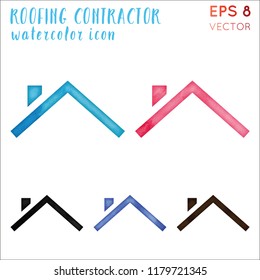Usual Paint Blunders To Avoid: Dos And Do N'ts For Success
Usual Paint Blunders To Avoid: Dos And Do N'ts For Success
Blog Article
Article Created By-Munch Macdonald
Making sure a remarkable paint job entails greater than just grabbing a brush. From surface area prep work to application techniques, there are common mistakes that can impede the end result of your painting job. By understanding the dos and do n'ts, you can boost your results and attain an expert finish. Allow's explore visit this site of the vital errors to steer clear of when handling your following paint endeavor.
Appropriate Surface Preparation
Thoroughly preparing the surface prior to paint is vital to make certain a smooth and resilient finish. Correct surface area preparation is the structure for an effective paint job.
Begin by cleansing the surface area to remove dust, oil, and other pollutants that can affect the paint's attachment. Make use of a mild detergent and water option, followed by washing and enabling sufficient drying out time.
Next off, check the surface for any fractures, openings, or blemishes. Fill up these with an ideal filler and sand them down till smooth.
After repairs, it is important to prime the surface area. Primer assists the paint stick better, boosts color uniformity, and offers included security. Pick a guide ideal for the surface area material and the type of paint you'll be using. Permit the guide to completely dry completely before applying the paint.
Last but not least, think about fining sand the topped surface area lightly to make certain a completely smooth base for the paint application.
Choosing the Right Paint
Efficient option of the appropriate paint is critical for attaining a successful and long-lasting paint task. When picking the best paint, think about elements such as the surface to be repainted, the space's function, and the preferred finish.
For interior paint, latex paints are often preferred as a result of their longevity, simple clean-up, and reduced odor. On the other hand, oil-based paints are better fit for high-moisture locations like bathroom and kitchens.
Picking the proper finish is additionally crucial. Level paints are ideal for ceilings and walls with flaws, as they conceal imperfections well. Satin and eggshell finishes offer a slight luster and are less complicated to clean up, making them suitable for high-traffic locations.
For outside painting, acrylic paints are frequently utilized for their weather resistance and versatility.
Additionally, be mindful of the paint color and its impact on the space. Lighter shades can make a space feel more spacious, while darker tones include coziness. Always check a tiny area prior to dedicating to a color to ensure it matches the room's illumination and decor.
Application Techniques
When it comes to painting, understanding proper application methods is essential for achieving a smooth and professional surface. One basic technique is to guarantee that the surface to be repainted is tidy and appropriately prepared. This includes fining sand rough areas, filling in openings or fractures, and using guide if necessary.
Using the right tools is likewise critical. mouse click the up coming article and rollers can make a considerable difference in the last end result. When utilizing a brush, apply paint in smooth, even strokes in the direction of the timber grain or in long vertical strokes for wall surfaces. For rollers, work in manageable sections and roll in a zig-zag pattern to prevent noticeable roller marks.
Preserving a wet edge is one more essential strategy to stop lap marks. This indicates maintaining a wet edge of paint as you function to blend each new section effortlessly with the previous one. Furthermore, when applying numerous coats, make certain each layer is fully dry prior to applying the next to stop peeling or splitting.
Grasping these application strategies will help you accomplish professional-looking results in your painting tasks.
Conclusion
Finally, staying clear of usual painting mistakes is vital for achieving a professional surface. Avoiding surface preparation, utilizing the incorrect type of paint, and hurrying the application process can all negatively effect the outcome of your job.
By adhering to proper strategies and putting in the time to prepare, pick the right paint, and apply it appropriately, you can guarantee an effective painting project with long lasting results.
